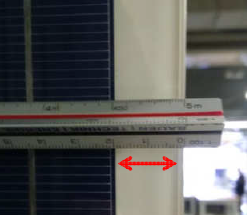Year 2016 was a milestone in for solar PV industry with the revision on photovoltaic (PV) module standards. The new IEC 61215 standard, which came into effect in March 2016, has brought deep changes in the certification procedure to comply with the actual requirements of the industry. It now aligns the requirements for crystalline Si and various thin-film technologies for manufacturers and provides clearer structure of general requirements, test methods, and technology specific parts.
Subsequently the new IEC 61730, the standard for Solar PV module safety and adopted in August 2016, provides minimum design requirements to assure the safety of the product during its operation. It has served as the initial bridge between the European and American guidelines, but the new revision will provide clearer requirements and consideration of new technology.

How big is the impact and who should be concerned
The IEC standard updates, which is more like a new standard release, describe new testing structures and conditions for qualification and minimum design requirements –as creepage and clearance distances– in order to safely operate at higher voltages, fulfilling the market trends.
These revisions will affect the manufacturers of PV module and PV component (e.g. backsheets, EVA, cell and glass) in the solar industry. To some extent, distributors of PV-related equipment need to be aware of some of the specifications too.
A quick glance on the updates on IEC 61215:2016
- A total of 19 Module Quality Tests (MQT) (e.g. MQT 11, MQT 14, MQT 19)
- Some MQTs, for instance MQT 19, will require additional tests
- Many more possibilities for testing depending of the tested product
- IEC 61646 and IEC 61215 have merged to standardize all flat technologies.

A quick glance on the updates IEC 61730:2016
- The IEC 61730-1 has been completely revised.
- New testing sequences including new MSTs
- Minimum electrical requirements in design to meet higher voltage
- Testing conditions have changed to ensure safety of the product
- New mechanical requirements


The revisions on the two IEC standards were discussed in details with our PV expert in a recent workshop in Kuala Lumpur, Malaysia.
“The enhancement of PV testing adapting best practices and adding new methods to satisfy different test, safety and application. Main key learning is the major changes (NMOT) and a major challenge as well on different PV manufacturing company located at the tropics. Another thing is the robustness of termination under MQT14, which simulates the way cables and J box are being handled especially during installation; And (also) the Diode testing for thermal performance after long term reliability.”
- Dennis Mendiola, Solar Philippines
Transition to the new standards
The counting-down to comply with these new standards has already started in some countries as India, where it is expected to come in force in July 2017; Australia is expected to withdraw the old one at some point in 2018; and Europe shall release the equivalent EN standard in short. After these deadlines, PV modules without these certifications, installation will not be permitted in the mentioned country or regions.
Therefore, in order to be able to address those and other markets, PV modules shall be tested and qualified according to these new standards.
Next step
- Get more information from the IEC 61215 and IEC 61730 technical presentation.
- Need help on IEC 61215 and IEC 61730? Ask TÜV Rheinland.
- Keep up-to-date to changes in regulatory and standards by subscribing to our mailing list.



